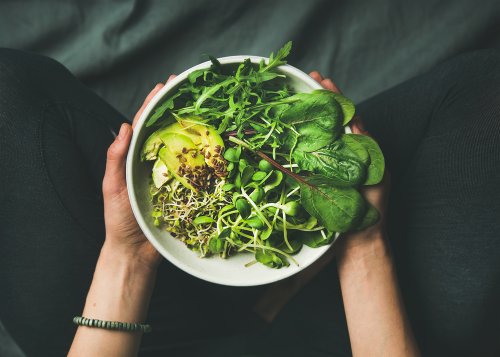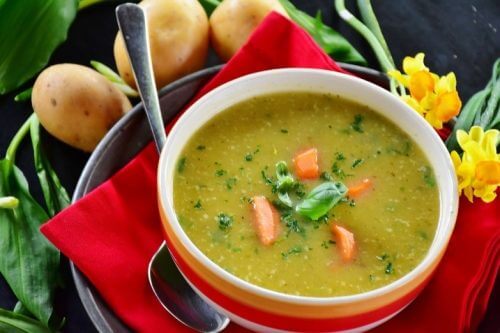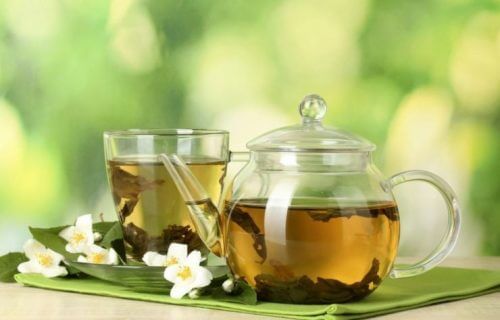Korean Diets: The Oriental Secret to Losing Weight


Reviewed and approved by the pedagogue in physical education and nutritionist Elisa Morales Lupayante
In the West, a lot of attention has been drawn to Asian women because of their slim figures. Even if genetics play a role, there’s no doubt that food has a lot to do with it.
Western-style food is presently influencing oriental food. Still, countries like Japan and Korea are sticking to many healthy culinary traditions that don’t cause weight gain.
In fact, Koreans have a longer life expectancy and lower obesity rates than people from other developed countries. What’s their secret? In this article, you’ll discover the main weight losing features of Korean diets.
Slimming secrets of Korean diets
Korean diets have become popular worldwide due to their slimming properties. However, it’s best not to confuse their basic principles with dangerous “miracle diets“, because they’re very different things.
Unfortunately, due to the worldwide boom of Korean food, many diet plans are too strict. However, although they do yield results, they still lack certain nutrients. Therefore, before following any diet plan, it’s important to seek advice from a dietician to see if a certain diet is appropriate for your age, health, and weight.
In general, some of the “secrets” from this cuisine should be included into any healthy and balanced diet.
Recommended reading: The Japanese Diet: Healthy Oriental Food for Weight Loss
High vegetable consumption

The Korean diet is based on fresh vegetables and rice. The following foods are low in calories and are in every main dish:
- Potatoes
- Mushrooms
- Cruciferous and green vegetables
- Tomatoes
- Carrots
Low meat consumption
Meat is a main ingredient in many Western countries, but it’s a secondary ingredient for Koreans. That’s why they have a low fat diet in comparison to other countries.
- Red meat is replaced with fish and seafood, which are high in omega-3 and protein.
- Koreans tend to roast or bake their meat so they have the least amount of fat.
Spicy soups

Fortunately, this fat-burning soup is easy to make. Soups are traditionally an elemental part of Korean cuisine. They’re light, easy to make, and filling due to their variety of ingredients.
It’s important to point out that many Korean recipes are spicy, which helps boost your metabolism to help you burn calories.
Herbal teas
Herbal teas are another reason why you should look into Korean food as a weight loss option.
- In Korea, it’s common to make green tea, barley tea, or roasted barley tea, all of which are famous for their fat-burning properties.
- They’re digestive drinks that help improve the body’s cleaning mechanisms, thus making it easier to shed weight.
Kimchi: A traditional dish
Kimchi is a traditional dish that is a main part of Korean cuisine. It’s considered one of the healthiest foods in the world due to the fact that it contains vitamins, minerals, and probiotics.
- It’s a fermented food made with dehydrated napa cabbage along with salt, garlic, ginger, fish sauce, and peppers.
- This spicy food is added to many meals because it’s very filling and low in calories.
Read more here: Try These Dessert Recipes That are Low in Calories
Small amounts of refined flours
Breads and other prepared foods with refined flours aren’t common in Korean diets. They’re not eaten as often as other healthier foods such as fruit and whole grains.
Cooking methods
In addition to calories and food combinations, Korean diets also are known for their specialized cooking techniques that maintain a dish’s nutritional value. Foods are rarely fried. Instead, they’re usually roasted or boiled.
Plenty of water

In addition to drinking herbal teas to complement their diet, Korean women also drink plenty of water throughout the day.
While all balanced diets recommend drinking water, Korean diets recommend drinking 2 to 3 liters a day.
Are you ready to test the Korean diet secrets? Remember that you shouldn’t start a strict or low-calorie diet. Just include these simple ideas into a balanced diet plan.
All cited sources were thoroughly reviewed by our team to ensure their quality, reliability, currency, and validity. The bibliography of this article was considered reliable and of academic or scientific accuracy.
- Tremblay, A., Arguin, H., y Panahi, S. (2016, 1 de agosto). Capsaicinoides: una solución picante para el manejo de la obesidad ‘. Revista Internacional de Obesidad. Grupo editorial de naturaleza. https://doi.org/10.1038/ijo.2015.253
- Jung, JY, Lee, SH, Kim, JM, Park, MS, Bae, JW, Hahn, Y., … Jeon, CO (2011). Análisis metagenómico del kimchi, un alimento fermentado coreano tradicional. Microbiología Aplicada y Ambiental, 77(7), 2264–2274. https://doi.org/10.1128/AEM.02157-10
- Link, LB, y Potter, JD (2004, septiembre). Verduras crudas versus cocidas y riesgo de cáncer. Epidemiología del cáncer, biomarcadores y prevención. https://doi.org/13/9/1422 [pii]
This text is provided for informational purposes only and does not replace consultation with a professional. If in doubt, consult your specialist.








